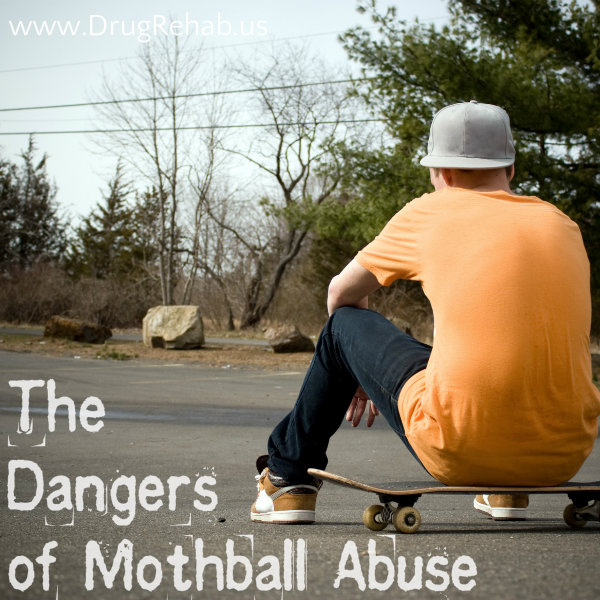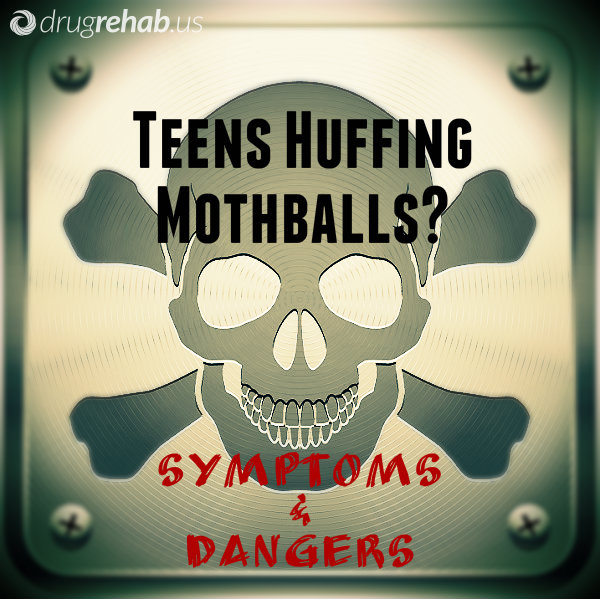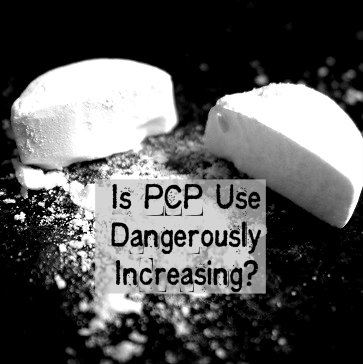01 Jun 2015
The Dangers Of Mothball Abuse
Substance use and abuse among teens and young adults often includes the huffing of inhalants. This is a practice that adults might engage in as well, but it is more common in young people because of access. Many household chemicals can be used for huffing, which is the practice of inhaling fumes to get high. Young people turn to huffing because it is an easy high. One substance in your home you might not suspect could be used in this way may be in your closet. Mothballs can be used to get high and, as silly as it sounds, the dangers are not insignificant.
What Is Mothball Abuse?
 Huffing means capturing and inhaling the fumes of certain chemicals in pursuit of a high. Many products and chemicals can be used for this purpose, ranging from Freon in air conditioning units to the gases in a can of whipped cream. People who abuse mothballs typically put them in a paper bag and breathe into it for several minutes. Mothballs are traditionally made with a volatile chemical called naphthalene, but newer products use a dichlorobenzene instead, as it is less flammable. Either chemical can be huffed for a high.
Huffing means capturing and inhaling the fumes of certain chemicals in pursuit of a high. Many products and chemicals can be used for this purpose, ranging from Freon in air conditioning units to the gases in a can of whipped cream. People who abuse mothballs typically put them in a paper bag and breathe into it for several minutes. Mothballs are traditionally made with a volatile chemical called naphthalene, but newer products use a dichlorobenzene instead, as it is less flammable. Either chemical can be huffed for a high.
Mothballs And Addiction
Mothball abuse may not sound as serious as something like cocaine abuse, but inhalant abuse can be dangerous and fatal. Users can even get addicted to the high that comes with huffing. Research on addiction to mothballs, naphthalene or dichlorobenzene is limited, but we do know that inhalant use can lead to addiction. Like any drug of abuse, inhalants cause the user to get high or experience a pleasurable sensation. With time and frequent use, the brain changes in response to this high, and quitting becomes more and more difficult. Eventually the user is hooked.
Is Napthalene Addiction Dangerous For Health?
Becoming addicted to naphthalene is extremely dangerous. Even if someone doesn’t get addicted, just using this substance recreationally is risky. Both naphthalene and dichlorobenzene are harmful, toxic substances. This is why moths stay away from mothballs. When someone inhales the fumes from mothballs, he will lose coordination, develop slurred speech, become weak in the limbs, get headaches, feel nauseated and vomit. Some users may even get a scaly skin rash.
These are short-term side effects of getting high on mothballs. The long-term health effects of inhaling these substances include kidney and liver failure, anemia, convulsions, seizures and coma. Death is also possible when huffing, no matter what substance is being used. Huffing can even be fatal on the first try because the user is cutting off oxygen supply when inhaling another substance.
The dangers of abusing mothballs are numerous and serious. If you have a teenager, make sure he knows that this habit, which may seem like harmless fun, is actually quite dangerous. If you use mothballs, make sure they are locked away to prevent access. Huffing is common among teens and an issue of which all parents should be aware.
Concerned Your Teen Is Abusing Drugs?
Call An Elements Behavioral Health Counselor Now!
16 Apr 2015
Yes, People Really Do Get High On Mothballs
It sounds ridiculous, but it’s true: there is such a thing as mothball abuse. It’s mostly abused by teens, which are at the right age for trying stupid things. As silly as it seems to be sniffing the fumes coming from mothballs, the risks and the dangers are real and serious.
Teens that engage in this behavior are at risk for some pretty worrying health problems. If you have a teenager at home and mothballs in the closet, bring up the issue and make sure the consequences of abusing this household product are serious.
The Mothball High
 Teens are famous for coming up with new and inventive ways to get high. These strategies typically involve some household product because access is easy. Huffing is a common way for teens to get high, and most parents don’t even think about it. Huffing refers to the practice of inhaling fumes from a household product in order to get high. The list of inhalants used is long and includes paint, nail polish remover, hairspray, scented markers, correction fluid and even mothballs.
Teens are famous for coming up with new and inventive ways to get high. These strategies typically involve some household product because access is easy. Huffing is a common way for teens to get high, and most parents don’t even think about it. Huffing refers to the practice of inhaling fumes from a household product in order to get high. The list of inhalants used is long and includes paint, nail polish remover, hairspray, scented markers, correction fluid and even mothballs.
Mothballs are solid balls that give off an odor that deters moths. They protect your clothes from the insect. The odor comes from a substance in the mothball that turns from a solid into a gas that can be inhaled. Teens sniff mothballs like a drug to get high. The substance that gives them this high is either naphthalene or dichlorobenzene. Older mothballs tend to contain the former, while newer products have the latter. Both can get you high and are harmful to inhale.
Is Napthalene Addiction Dangerous For Health?
Huffing mothballs is dangerous. Most teens won’t do it often enough to get addicted, but addiction is possible. What is more likely is that teens inhaling the fumes will experience health problems.
Symptoms Of Inhaling Mothballs
The most common and immediate symptoms of inhaling mothballs include the following:
- lightheadedness and dizziness
- nausea
- vomiting
- stomach pains
- headaches
- eye and airway irritation
- slurred speech
- loss of coordination
- mental impairment
- weakness in the limbs
- scaly skin rash
Long-term Consequences Of Mothball Abuse
There are also some very serious long-term consequences of mothball abuse. Teens who huff mothballs several times put themselves at risk for excessive:
- weight loss
- anemia
- liver failure
- kidney failure
- and even seizures and coma
The effects of abusing mothballs with naphthalene are similar to those with dichlorobenzene. Dichlorobenzene is less toxic than naphthalene, which is why newer mothballs are made with it, but it can still cause the same symptoms and the same lasting damage to the body.
Talk To Your Teen About Mothball Huffing…NOW!
Mothballs made the news several years ago when teenagers in France were hospitalized for huffing them. The twin sisters were seriously impacted by their drug habit and one of the two needed a full six months to recover.
While cases like these bring exposure to a dangerous practice like mothball huffing, the story disappears before long and people forget.
Be aware that your teen might experiment with mothballs. Talk to your teen about the dangers and help him understand the risk of engaging in this serious type of drug abuse.
12 Aug 2014
Curb Your Shopping Addiction
Traditionally, the term addiction has been restricted to the description of dependence on a chemical substance, such as drugs or alcohol. Today we have a broader view of what addiction is and many experts recognize what they call behavioral, or process, addictions. Certain behaviors, like gambling, eating, or shopping, can become habitual in a similar way to drug abuse. If you feel you may be starting to cross a line when it comes to your shopping and spending, recognize your behaviors and learn how to curb them before you really get out of control.
Shopping As An Addiction
 There is nothing wrong with enjoying shopping. Even shopping as a regular hobby is not necessarily a bad thing. As with any behavior, though, you may cross the line into addictive territory. Some of the aspects of chemical addictions are similar to what people with a shopping addiction experience. For instance, engaging in a shopping spree may be associated with strong emotions. People who shop compulsively often continue to do so in the face of financial problems. They may let their habit interfere with relationships. These are all commonalities with drug and alcohol addiction.
There is nothing wrong with enjoying shopping. Even shopping as a regular hobby is not necessarily a bad thing. As with any behavior, though, you may cross the line into addictive territory. Some of the aspects of chemical addictions are similar to what people with a shopping addiction experience. For instance, engaging in a shopping spree may be associated with strong emotions. People who shop compulsively often continue to do so in the face of financial problems. They may let their habit interfere with relationships. These are all commonalities with drug and alcohol addiction.
How Do You Recognize A Shopping Addiction?
You have had a bad day at work. You got in a fight with your boyfriend or your husband. The kids are really getting on nerves. What do you do to relieve your stress and boost your mood? If your automatic answer is to go shopping or make a purchase, you might have a problem. Using a behavior, like shopping, to regularly boost your mood and regulate your emotions is a sign of an addictive habit.
Other signs that your shopping is becoming a real problem include buying in spite of financial woes. Compulsive shoppers keep going even when they have drained the bank account. They rack up huge credit card debt. Some even lose their homes because of their habits. Maybe you’re hooked on bargains. Do you buy a new pair of black heels that are half off, even though you have ten pairs in your closet? If so, you could have a problem. Is your shopping disrupting your relationships? Are you hiding your purchases from your partner because you know they will start a fight otherwise? These are all signs that you have a very bad habit.
How Can You Curb Your Shopping Addiction?
The good news is that you can take steps now to reverse your compulsive shopping. Unless you are in so deep that you really can’t stop, these actions will help.:
- To limit how much you spend, only use cash
- Cut up all your credit cards to avoid the temptation to build more debt
- Make a list before you go shopping and stick to it strictly
- Eliminate all impulse buys
- Stay offline if you are a compulsive Internet shopper
What is most important and oftentimes most difficult is figuring out why you shop. When you feel the urge, stop to think about what is driving you to go shopping. Are you stressed? Depressed or anxious? Is there a particular event that is making you feel bad? Face these things head on rather than drowning your emotions in a shopping binge. When you face what you’re feeling you can find better ways to cope. Instead of going shopping, go for a jog. Have a cup of tea and read a book. Take a hot bath or talk to a friend. Whatever you do, don’t give in to the urge to shop. If you still can’t control your urges, seek professional help.
Read On To Find Out If You Have A Food Addiction Or Other Behavioral Addiction
29 Jan 2014
Is PCP Use Dangerously Increasing?
PCP is a well-known nickname for phencyclidine, a powerful tranquilizer that, among its other effects, interferes with the ability to remain consciously connected to the self or to one’s surroundings. Since the 1960s, the tranquilizer has been purposefully or unintentionally used as a recreational drug by a small but significant number of teenagers and adults. For a long time, PCP seemed to drop in popularity among drug users. However, according to the results of a report released in November 2013 by the federal Substance Abuse and Mental Health Services Administration (SAMHSA), use of the use of PCP may be on the rise.
PCP’s Effects
 PCP produces its effects as a tranquilizer by causing dissociation, a detached mental state featuring a diminished capacity to take in the sensory information that human beings rely on to stay oriented to reality and maintain self-awareness. The drug can also produce a number of other immediate or short-term effects, including hallucinations, delusional behavior, paranoia, unusual aggression or agitation, euphoria, panic, a lack of normal mental or physical responsiveness, speaking difficulties, muscle impairment, changes in breathing and heart rates, obsessive thought patterns and depression.
PCP produces its effects as a tranquilizer by causing dissociation, a detached mental state featuring a diminished capacity to take in the sensory information that human beings rely on to stay oriented to reality and maintain self-awareness. The drug can also produce a number of other immediate or short-term effects, including hallucinations, delusional behavior, paranoia, unusual aggression or agitation, euphoria, panic, a lack of normal mental or physical responsiveness, speaking difficulties, muscle impairment, changes in breathing and heart rates, obsessive thought patterns and depression.
The specific short-term effects of PCP in any given individual depend largely on the amount of the drug he or she consumes. People who take doses well over 10 mg can experience a phencyclidine-related overdose that leads to seizures, coma or loss of life. Potential long-term effects of habitual PCP use include chronic memory problems, chronic psychosis and persistent depression or anxiety.
Tracking PCP Use
In the U.S., the federal government tracks the use of PCP and other commonly abused substances in a number of ways. For instance, the National Institute on Drug Abuse tracks usage rates among teenagers through an annual project called Monitoring the Future, which uses statistics gathered from 130 strategically chosen high schools to estimate larger national substance intake trends. The Substance Abuse and Mental Health Services Administration tracks drug use in the entire U.S. population by gathering information on drug-related incidents from emergency rooms at hospitals across the country, as well as information on drug-related deaths submitted by both coroners and medical examiners after they conduct autopsies. The system used to coordinate this information and issue important findings is called the Drug Abuse Warning Network (DAWN).
Evidence For A Rise In PCP Use – Who’s Using?
In the report issued by SAMHSA, officials from the Drug Awareness Warning Network tracked the national trajectory of PCP-related emergency room visits between 2005 and 2011. In 2005, 14,825 incidents were reported by emergency room personnel. By the close of 2011, this figure had risen to 75,538, or slightly more than five times the 2005 total. Much of this increase can be attributed to a serious spike in PCP-related episodes in the two years between 2009 and 2011.
The DAWN report contains a wealth of detailed information on exactly who is being impacted by the rise in PCP-related emergency room episodes. Among preteens and teenagers between the ages of 12 and 17, emergency room episodes increased by 184 percent between 2005 and 2011. Among older teenagers and young adults between the ages of 18 and 24, episodes increased by 289 percent.
However, the highest increases occurred among adults between the ages of 25 and 34; people in this age group experienced a 518 percent spike in PCP-related emergency room visits between 2005 and 2011. Adults between the ages of 35 and 44 experienced a 300 percent increase. No accurate figures were available for adults over the age of 44. In addition, the authors of the DAWN report concluded that, depending on the age group in question, boys and men are anywhere from three to 10 times more likely than girls and women to experience a PCP-related emergency room episode.
PCP Risk Knowledge
No one knows for sure if the DAWN figures, which only highlight one potential outcome of PCP use, point toward an actual rise in intake of the drug across the U.S. However, DAWN findings typically have significant value in the overall effort to track drug use trends. The authors of the report believe that any spike in PCP use may stem from lack of familiarity with the drug among younger users, as well as a subsequent lack of understanding about the risks associated with PCP intake. They also believe that future PCP-related public health campaigns may have an improved effect if they’re especially targeted at young adults in their late 20s and early 30s.
Read More About How As The Drug War Escalates, Drugs Get Stronger And Cheaper
23 Mar 2013
Mothball Abuse
The variety of substances misused by people at times seems staggering. It is especially alarming when teenagers come up with a different everyday substances to consume, smoke, or inhale for a high. When they cannot get access to alcohol or street drugs, kids often turn to household items. Using inhalants like aerosol cans, for instance, is nothing new. Popping up on the radar now, however, is abuse of mothballs. The smelly, moth-deterring balls that protect wool sweaters are giving some kids a high and sometimes leading to health consequences as well.


